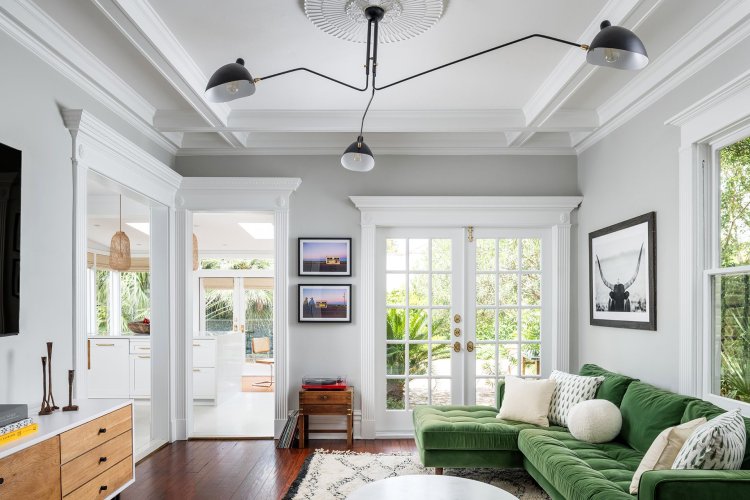Best Ways to Approach Home Remodeling on a Budget
Home remodeling is an exciting venture that can breathe new life into your living space. Whether you're looking to update outdated features,

Home remodeling is an exciting venture that can breathe new life into your living space. Whether you're looking to update outdated features, enhance your home's functionality, or simply give it a fresh look, remodeling is an excellent way to achieve these goals. However, the cost of a home remodeling project can quickly spiral out of control without proper planning and consideration. Fortunately, there are numerous ways to approach home remodeling without breaking the bank. By adopting smart strategies and making informed decisions, you can achieve your vision without exceeding your budget.
Plan and Prioritize Your Remodel
The first and most crucial step in any remodeling project is planning. Before you start tearing down walls or buying materials, it's essential to assess your needs and goals. What do you want to achieve with this remodel? Are you looking to increase your home's resale value, enhance comfort, or address specific issues like outdated electrical systems or plumbing? Understanding the purpose of the remodel will help guide your decisions and ensure that you're investing in areas that provide the most value.
Once you’ve identified the overall objective, break down the project into specific tasks. Some areas, such as kitchen and bathroom remodels, typically offer a higher return on investment. These areas should be prioritized if you're looking to sell your home in the future. On the other hand, cosmetic changes, such as painting or upgrading lighting fixtures, can be more affordable yet still have a significant impact on the look and feel of your home.
Set a Realistic Budget
Creating a realistic budget is the foundation of any successful remodeling project. Without a budget, it's easy to get carried away with your ideas and overspend. Take the time to research the average costs of materials, labor, and other necessary expenses in your area. This will help you set a reasonable budget that aligns with your expectations.
Be sure to leave room for unexpected expenses—it's always wise to set aside 10-20% of your budget for contingencies. Remodeling projects often uncover hidden issues, such as structural damage or outdated wiring, that may require additional work. A contingency fund ensures that you're prepared for any surprises that may arise along the way.
Do It Yourself When Possible
One of the best ways to save money on home remodeling is by taking a DIY approach to certain tasks. While some projects, such as electrical or plumbing work, should always be handled by professionals, there are many aspects of remodeling that can be done on your own.
Consider tackling tasks like painting, installing new hardware, or updating fixtures. These small projects can make a big difference in the overall look of your home and are relatively easy to complete with the right tools and instructions. YouTube tutorials, online forums, and DIY blogs can provide valuable guidance and help you avoid costly mistakes.
If you're not experienced with construction work, it's wise to start with simpler tasks and gradually work your way up to more complex projects. Not only will you save money on labor costs, but you'll also gain a sense of accomplishment and pride in completing the work yourself.
Reuse and Repurpose Materials
One of the biggest expenses in home remodeling is materials. However, there are several ways to cut costs without sacrificing quality. Reusing and repurposing materials is an effective strategy for saving money.
For example, if you're remodeling your kitchen, consider painting or refinishing existing cabinets instead of replacing them entirely. You can also update cabinet hardware to give them a fresh look. In some cases, old furniture or fixtures can be repurposed for new uses, such as turning an old dresser into a bathroom vanity or using reclaimed wood for accent walls.
Salvage yards and online marketplaces are great places to find gently used materials and furniture at a fraction of the cost. By getting creative and repurposing materials, you can achieve a stylish, unique look for your home without spending a fortune.
Shop Smart for Materials and Fixtures
When it comes to purchasing materials and fixtures for your remodeling project, shopping smart is essential. Start by comparing prices from different suppliers and retailers to ensure you're getting the best deal. Don't forget to look for discounts, sales, or clearance items, which can significantly reduce the cost of your project.
If you're open to it, consider purchasing gently used or surplus materials. Many home improvement stores offer clearance sales on items like tiles, flooring, and fixtures that are still in excellent condition. Online auction sites and local classifieds often feature discounted materials from homeowners who are remodeling their own properties.
Another way to save on materials is by purchasing in bulk. Many suppliers offer discounts on large orders, so if you're remodeling several rooms or areas of your home, buying materials in bulk can be a cost-effective choice.
Hire the Right Professionals
While DIY projects can save you money, some remodeling tasks are best left to professionals. Hiring the right contractor is crucial to ensuring that the work is done correctly and on time. A reputable contractor can also help you stay within your budget by recommending cost-effective solutions and avoiding costly mistakes.
When hiring a contractor, take the time to do thorough research. Ask for recommendations from friends and family, read online reviews, and check the contractor's licensing and insurance. Request multiple quotes from different contractors to compare prices and services, and don’t be afraid to negotiate. Keep in mind that the cheapest option isn't always the best—quality and reliability should be your primary concerns.
Focus on Cosmetic Changes
If you're working with a tight budget, cosmetic changes are a great way to update your home without breaking the bank. Cosmetic remodels focus on enhancing the appearance of a space without making major structural changes. These projects are often less expensive but can still have a significant impact on the overall aesthetic of your home.
Examples of cosmetic changes include painting walls, updating light fixtures, replacing cabinet hardware, installing new flooring, or adding decorative accents like throw pillows or artwork. These small updates can refresh the look of your home and make it feel more modern and stylish.
Take Advantage of Tax Incentives and Rebates
In some cases, home remodeling projects can qualify for tax incentives or rebates, especially if you're making energy-efficient upgrades. For instance, installing energy-efficient windows, insulation, or appliances may qualify for tax credits or rebates from local utility companies or government programs.
Before starting your project, research available incentives in your area to determine if your remodel qualifies. These savings can offset the costs of your remodel and make it more affordable.
Creating Custom Homes with Revive Design & Build
At Revive Design & Build, we specialize in creating custom homes that are as unique as you are. Located at 7860 Mission Center Court #109 in San Diego, we offer a variety of remodeling services, from custom kitchen and bathroom renovations to full home builds and renovations. We work with you to design a home that meets your specific needs and exceeds your expectations. For more information or to start your custom project, call (858) 650-9636 or visit ReviveDesignAndBuild.com.
What's Your Reaction?



















